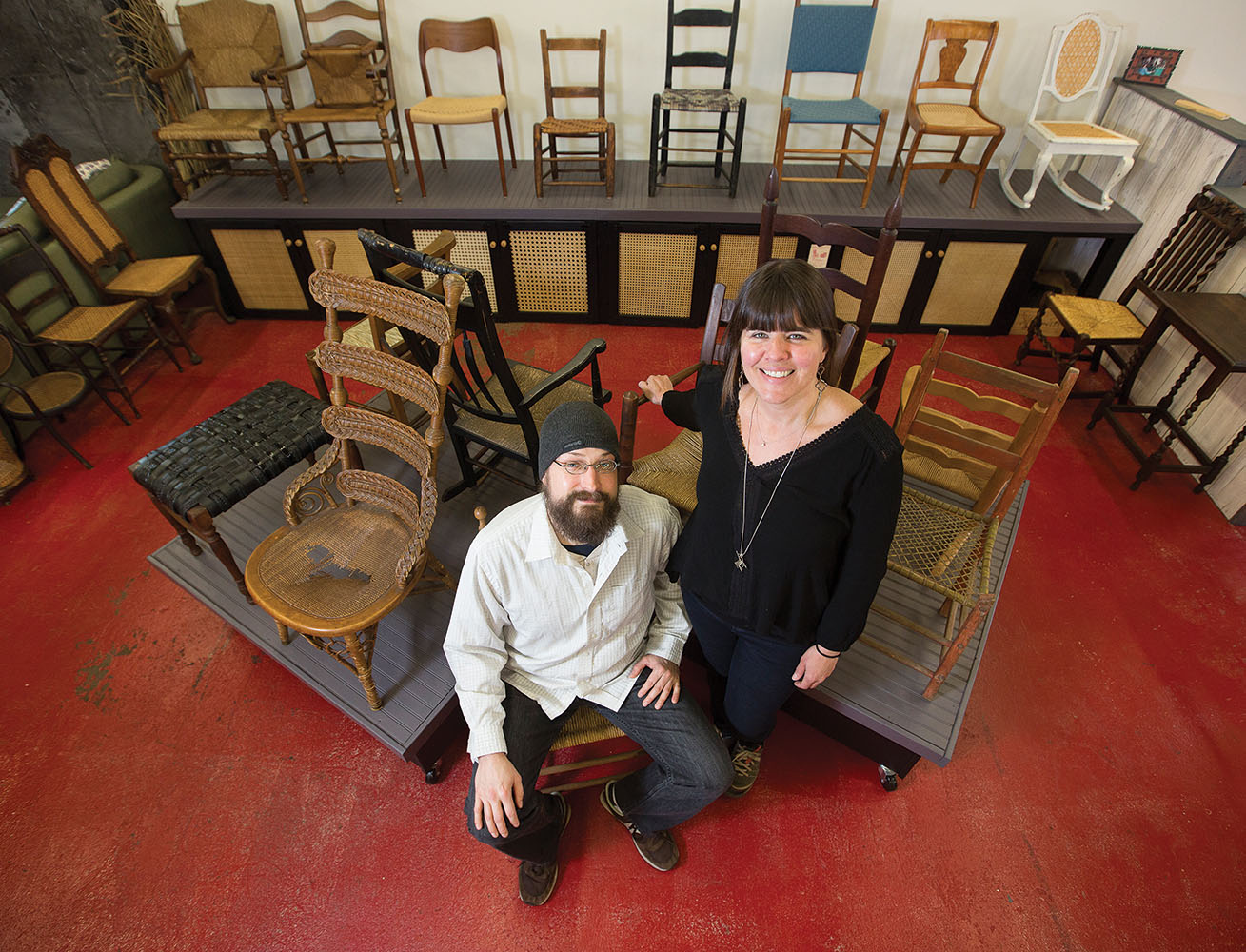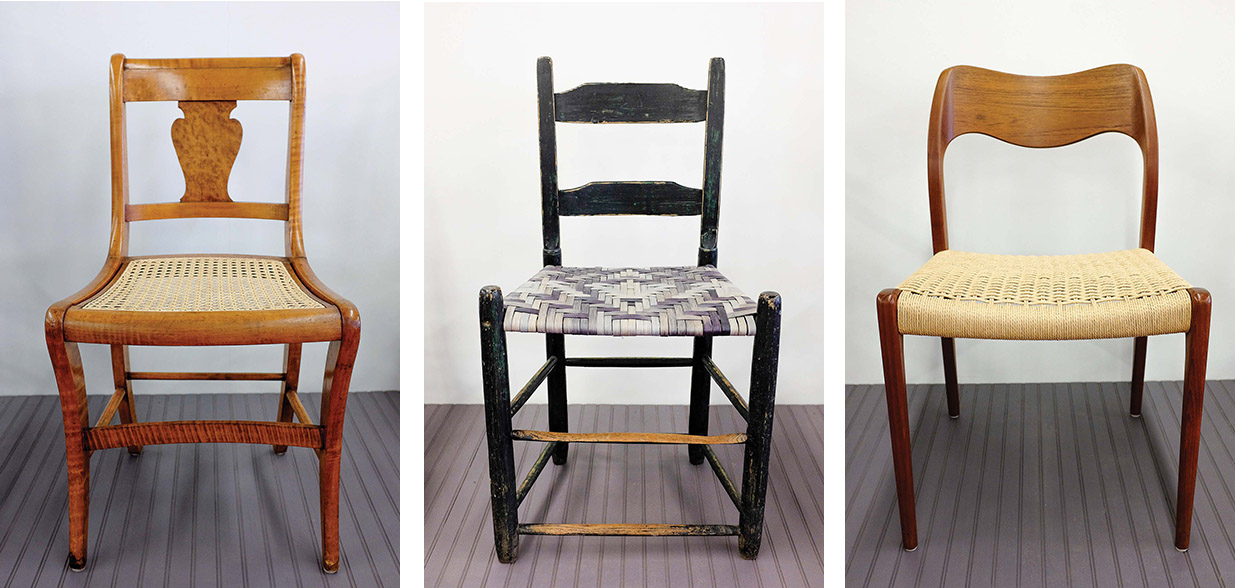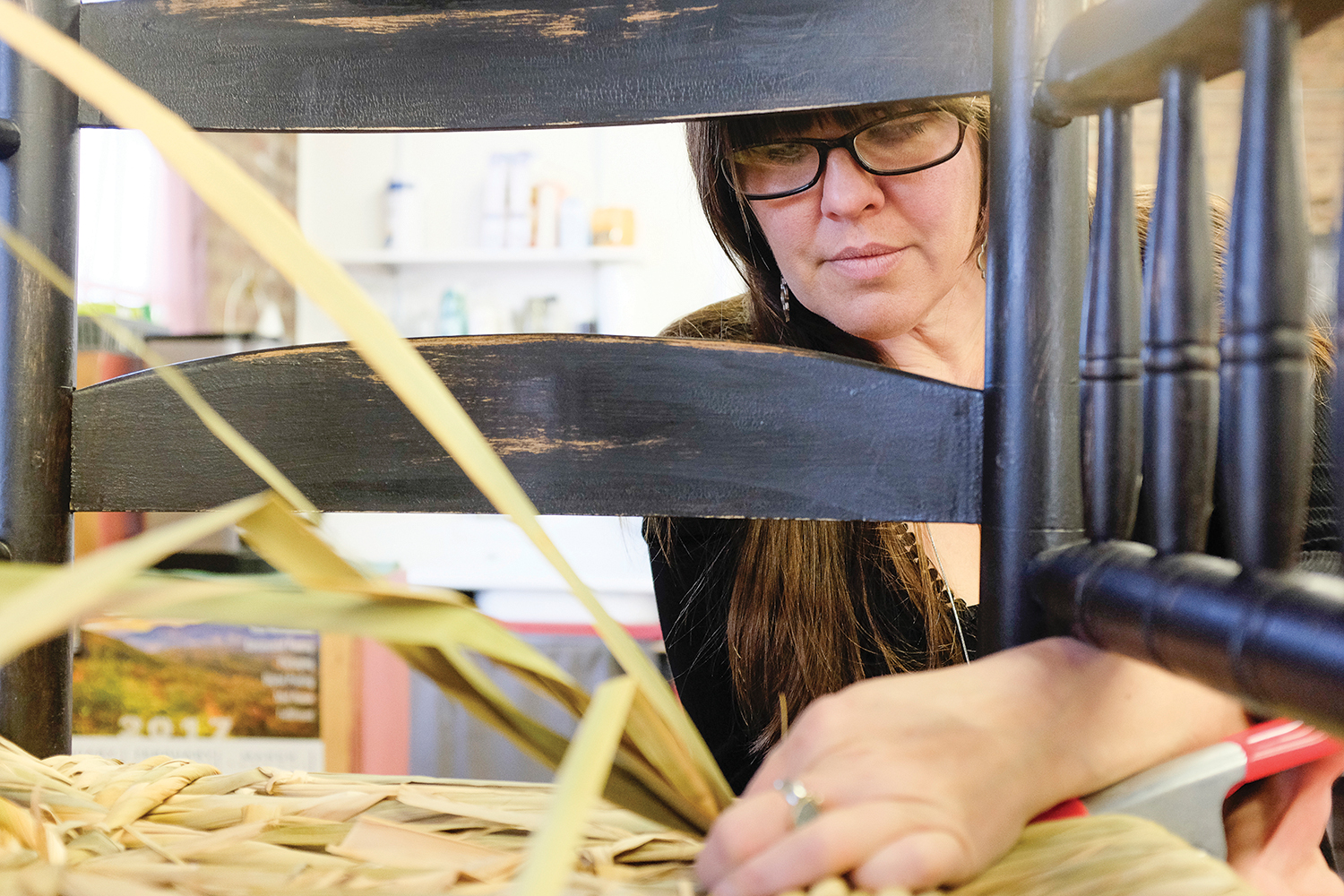
A hand-caned chair seat appears rustic and comfortable. But it carries a lot more weight beyond its function and simple elegance. The style is part of a long and proud — ancient, even — lineage.
When self-described “chair nerds” Brandy Clements and Dave Klingler established the Silver River Center for Chair Caning in much more recent times, 2007, they increased the status of their operation by making it not only a chair-crafting school, but — unique in North America — a museum of historical preservation.
The couple is deeply committed to sustaining the practice. Their space features a combination of rotating exhibits and a permanent collection that reveals 86 styles of caning. “And that’s not all-inclusive, not by any means,” Klingler notes. He considers the display a jumping-off point to encourage further exploration. “Here we are, ten years in, and we still see styles come in that we’ve never seen before.”
A walk around the Center reveals a fascinating aspect of chair caning: in the same way that geography and climate affect a region’s farming practices and diet, so, too, do they exert great influence on its furniture. Because chair caning developed among the indigenous peoples of cultures across the globe, materials differ widely. “Styles become regional,” Klingler says.

Clements cites an example. “A lace cane chair came in from South Africa, and the cane was made with cowhide.” In most places, rattan is the traditional material for lace cane. But in South Africa, rattan shipments from Indonesia ceased in the 1700s. So artisans improvised, using materials at hand.
Chairs that are part of the rotating exhibit are often on loan from members of the national SeatWeavers Guild. And though caning goes back centuries, the Guild is very new; established a decade ago, the same as Silver River, it’s “fully dedicated to seat weaving,” says Klingler. “Much like we are.”
Silver River hosted the Guild’s 2016 annual gathering at Western North Carolina’s Folk Art Center. Ninety chair caners came from as far away as New Mexico to share their skills — as well as “knowledge and camaraderie,” says Clements.
Their own operation is designated as an Official Education Center of the Southern Highland Craft Guild, and in its well-appointed space — the entire second story of a former warehouse in the heart of Asheville’s trendy River Arts District — it offers training in hand-woven and machine caning, in styles including Rush, Splint, and Shaker Tape.
Workshops are scheduled about once a month, and an intensive ten-day “boot camp” is hosted periodically. Mastering the art of chair caning is demanding and physically challenging — “it can’t be done in an hour, as HGTV might lead you to believe,” cautions Clements.

The art’s Appalachian dimension is distinguished in some of the museum’s permanent-collection pieces. “We pay homage to that tradition with chairs caned using cornshucks and hickory bark,” says Clements, who is descended from several generations of caners, including a paternal great-grandmother from Virginia. For her, the family craft “has become an unexpected odyssey and a passion,” shared by what she calls “a surprising number of chair connoisseurs” throughout the culture. Through their participation in social media, Clements and Klingler have discovered — and maintained communication with — craftspeople from Egypt, Argentina, Uruguay, Brazil, Australia, and throughout Europe. “We’re here to produce a new generation of chair caners. This is indeed a worldwide craft,” she says.
Her vision of the immediate future is even more ambitious: “We could fill 10,000 square feet with the exhibit ideas in my head.”
The Silver River Center for Chair Caning is located at #9 CURVE Studios & Garden in Asheville’s River Arts District. Museum hours are Monday through Friday, 10am-5pm, and Saturday 11am-4pm. (Free admission.) For information about workshops, call 828-707-4553, e-mail silverriverchairs@gmail.com, or check out the website: www.silverriverchairs.com.

Very impressive guys! Great article!